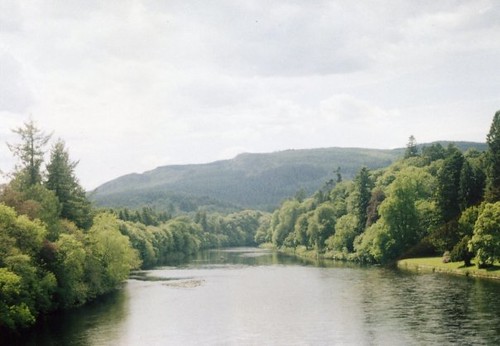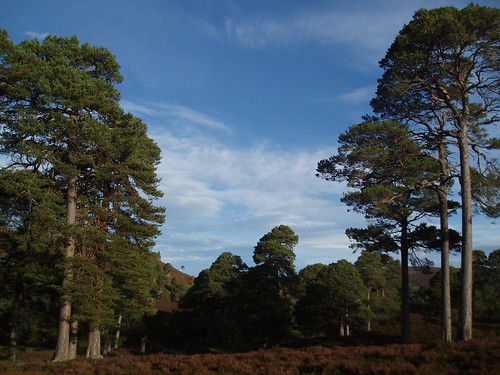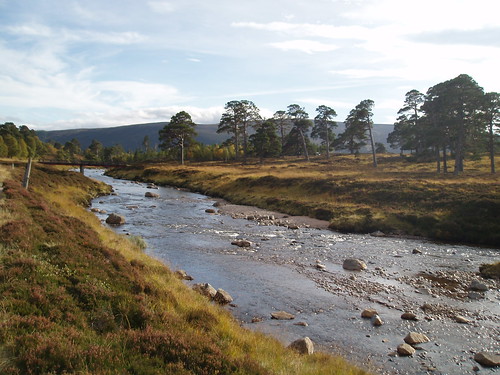
Different evolutionary stages and regional movements of environmentalism have often been paired with, or at least have found their reflections in some form of contemporaneous art. We all know the striking terror and dualism manifested in the works of romantic artists, and the picturesque natural scenes of the transcendental movement that provide with the wrap of their leafy green quilt a comfort and refuge for contemplation. I recognize the bias and relative rarity of my personal views with respect to environmentalism as a master’s student studying biodiversity conservation, but I find striking parallels between an environmental ideology centered around biodiversity conservation and the works of many artists working under a genre variously titled landscape art, earth art, land art, or earthworks. Beginning in the late 1960’s, a handful of artists abandoned the confines of classical gallery exhibition space and ventured into the open air. With no walls or ceilings to limit their gaze, new works spilled out over and into the landscape, blending earth, man-made structures, sky, and water.
It was upon the suggestion of a friend who is an art student that I first came across Christo and Jeanne-Claude. Attention-fixing if only for their sheer size and audacity, the works of this couple swallow monuments and buildings, carve grasslands, and chromatically insolate islands. As the wow wore off, I was able to see not only the beauty, but also to interpret the poignancy and statement of these constructions. The artists themselves have stated that they pursue no concrete agenda with their art, rather, they only seek novelty and joy. No theme is ever repeated, nor does it make any political or social statement. My best understanding is that they wish to create out of that which is extant with very modest inputs, something new, a new perspective or space. It is here that the lines running parallel between conservation and art deviate from their respective courses, and if they do not ultimately merge, they certainly become more acquainted. From what is there, something new is made. A space is delineated and a place is created. Sheets of white nylon bisect an entire countryside and even the nearby coastal shelf in “Running Fence”. A ‘here’ and a ‘there’ is created from that which was once whole. Similarly, natural spatial delineations are emphasized in “Surrounded Islands”, where islets in Biscayne Bay, Miami, Florida were enveloped in floating swatches of bright pink polypropolene fabric punctuating the inherent separation of the terrestrial islands from the water and nearby mainland, insolating them further.
Here the analogous relationship between conservation and art is physically made manifest on the same template. Conservationists seek to delineate and establish spaces and places on Earth to save or protect something that is held within in which they place some value. Christo and Jeanne-Claude manipulate environmental spaces in very much the same way, but their motivation springs from a different set of values, namely aesthetics and pleasure. In each case, a set of values is projected onto the landscape. This sort of act is not novel, for much of human history man has either reflected his conception of his relationship with nature through culture and its productions, or as his perspective on the natural environment has changed, he has sought to imprint his ideals and values upon the landscape. It is possible to track an evolution of spatial conception in western thought from the topographic to the chorographic to the geographic. In the topographic period societies with limited mobility were necessitated by this circumstance to be intimately familiar with their immediate surroundings, their topography, and had no need to conceive of what existed beyond their sphere of existence. In the chorographic stage, communication and reach expanded, causing people to use astrological reference points to situate themselves both physically in their environment and cosmologically in their world. In the geographic, impediments to mobility disappeared and speed of travel accelerated. Man was finally able to conceive of his earth objectively which led to the notion that he may control it and its constituent parts completely. Consequently, humans have been mapping, partitioning, and generating novel spaces and places to suit their own wants and needs. Our capabilities as a species have allowed us the freedom to believe we can control our world. One expression of this power is in the creation of landscape art or protected areas for conservation. The only thing differentiating the two is what values motivate their genesis.
Christo and Jeanne-Claude, along with other fellow earth artists such as Walter Smith, Walter de Maria, Richard Long, Michael Heizer, Andy Goldsworthy, Joseph Bueys, and Bruce Naumann are topical examples of the will of man to create a place or a space out of an environment. Within the field of conservation, WWF’s Ecoregions, Conservation International’s Biodiversity Hotspots, Birdlife International’s Important Bird Areas, IUCN’s Biogeographical Provinces, as well as a broad array of municipal, state, and national parks, wildlife refuges, national forests, and marine reserves worldwide similarly create a new space out of an existing environment. By creating these spaces, what was once only an intangible, abstract ideal becomes a reality, physically bounded and governed by the laws prescribed by nature and man, and having influence and exchange with living things and natural processes. An environment given spatial boundaries and injected with meaning brings with it altered conceptions and prescriptions of acceptable behaviour. It is therefore crucial that adequate forethought be given to the implications that will accompany founding a place on a distinct set of values. While art occasionally dabbles with the natural environment as a template, conservation works solely with the media of biological diversity.
Let us retreat momentarily from our geographic conceptual seat and recognize another thread which weaves its way through landscape art and protected areas in respectively different patterns. Christo and Jeanne-Claude’s pieces are by their design temporally fleeting. Each one is only left fully constructed for a period of fourteen days, long enough only to be felt by a limited number of individuals. When the exhibition’s term has expired, all materials are removed and the landscape is restored exactly as it was found. Richard Long’s Walking a Line in Peru consists of a single path emblazoned across a landscape by the repetitive footfalls of the artist. Within a day of completing the piece and capturing it on film, the line had disappeared and the art had vanished, wiped clean from the canvas by the canvas itself. Partially Buried Woodshed is a sufficiently self-descriptive title for this piece by Robert Smithson who did as the title suggests and then recorded synchronically nature’s reclamation of the place. In each example, temporality is highlighted, and thus dynamism. These works imply the agency of natural forces in shaping and ultimately destroying the constructions themselves. In a similar sense, creating a protected area of any kind is also a fleeting, sometime inconsequential act. Efforts, implementation, policies or funding can prove ineffectual in terms of honouring the values upon which the institution was built, resulting in only a temporary period of protection for whatever the conservation subject may be. In another sense, natural processes have shown they have a way of supplanting anthropogenic efforts to change an environment, although clearly, given the current climate-change scenario and wave of human-driven extinctions, they aren’t immune to human action. On a broader perspective, environments have a way of absorbing and adjusting to disturbance, whatever the magnitude and duration, and achieving a state of dynamic equilibrium. Where it is incontrovertible that humans have had serious deleterious impacts on the earth, in the long term it will rebound, into some state, historic or novel. That is not to say conservation efforts are useless, they have a powerful role in stopping or mitigating the effects of human actions in the short-term, which then resonate in the long-term. But ample respect and credit must be given to the resilience of nature to find its own path.
Using art as a mirror can allow conservationists a different perspective on how they think about their motivation and their work. As every academic and scientific discipline increasingly swaps in sights and bleeds back and forth in present times, maybe art should be given granted a bit more influence. It could help us reconsider what values motivate us and clarify our visions, then maybe find ways to better translate these motivating factors into tangible, long-lasting results.
-Chris Joseph
22-2-10








